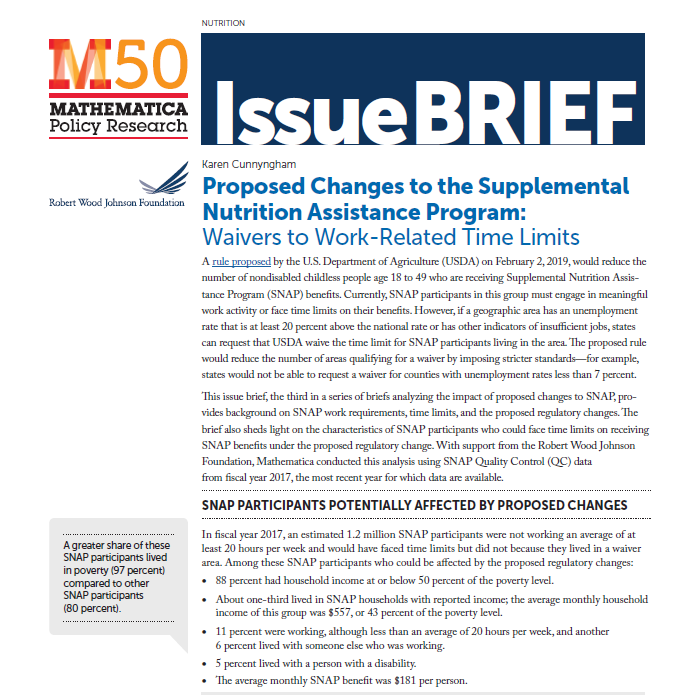Currently, SNAP participants without a disability who are age 18 to 49 and live in childless SNAP households must work an average of at least 20 hours per week or face a time limit on their SNAP benefits of no more than three months of benefits in a three-year period. But states can exempt some SNAP participants from the time limit by requesting a federal waiver for a geographic area that meets USDA’s criteria for high unemployment or a weak labor market.
Under the proposed changes, it would be more difficult for states, or parts of states, to qualify for a waiver. For example, areas with an overall unemployment rate at least 20 percent above the national average can currently qualify for a waiver; under the proposed rule, however, the area’s unemployment rate would also need to be at least 7 percent to qualify.
In its Regulatory Impact Analysis, USDA estimates that, under the proposed rule, approximately 755,000 SNAP participants will ultimately lose their SNAP eligibility in fiscal year 2020. Others who are currently living in waiver areas will remain eligible, because they will increase their work-related activity to meet federal requirements, they live in areas that will continue to receive waivers, or they will continue to receive another type of state exemption.

